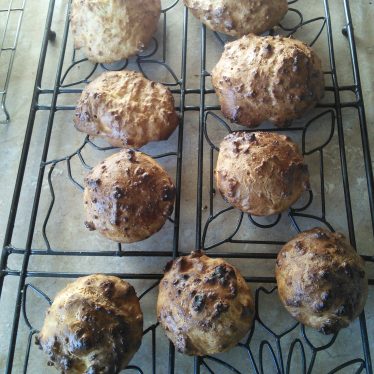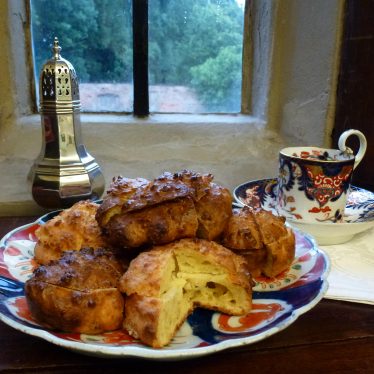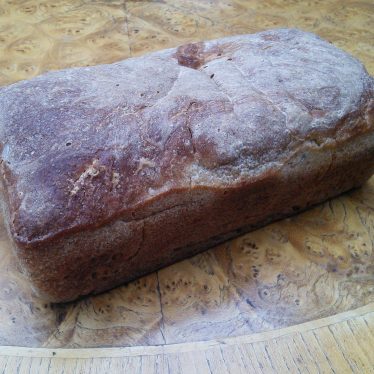Whether the buns I produced are anything like the ones produced in 1650 one will never know. They were jolly tasty, but not sufficiently so to warrant all the time consuming ‘Manchet’ preparation. Was this time consuming method and relatively high-end ingredients an indication of ones status? If I were making this again I would just use wholewheat breadcrumbs! The curd making was fun. I quite fancy making some cheese of a cheddar type…
On reading the next section you will notice that it refers to manchet as being a medieval / tudor fare. Does that indicate that this recipe had earlier origins and was a sufficient favourite to be copied in to this much later volume?
More on Manchet
For much of Britain’s history most bread was commonly made from a mixture of a coarse flour, often rye or barley. This was Maslin Bread, and it fed the lowest classes in Medieval society, and also made the trencher (bread plates) used in feasts to eat food off.
The exception to this was bread for the privileged few, made of double boulted (sieved through a cloth) stoneground wheat. This bread was Manchet, or Pandemain (lord’s bread) and was some of the best quality leaven bread eaten in Medieval and Tudor Britain.
Medieval milling
Yet it also needs to be remembered that Medieval milling and boulting methods were never wholly successful in removing all of the bran from the ground wheat grain, even the best flour produced was an ‘off-white’ flour, rather than the pure white flour produced today by modern industrial roller milling and boulting methods.
Even so, this whiter manchet flour was desired by the rich upper classes because it made a lighter loaf, of finer texture. It was also far more expensive than mixed grain breads because it involved additional costs and labour and because a proportion of the grain (the larger bran particles etc.) was discarded in the boulting process, so that more grain was needed to produce the same amount of flour. Therefore this whiter, finer bread was a status symbol for those who could afford it.










Comments
Gorgeous photos and jolly nice bread to boot!! Very different to what I was expecting, but pleasant to eat. The addition of the curd help to give a flavour kick to the bread which was not cheesy in the sense we have come to know today.
Excellent effort Rob, they look delicious. Much more successful than my ‘Egge Pye’!
Add a comment about this page